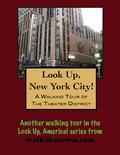There is no better way to see America than on foot. And there is no better way to appreciate what you are looking at than with a walking tour. Whether you are preparing for a road trip or just out to look at your own town in a new way, a downloadable walking tour from walkthetown.com is ready to explore when you are. Each walking tour describes historical and architectural landmarks and provides pictures to help out when those pesky street addresses are missing. Every tour also includes a quick primer on identifying architectural styles seen on American streets. In 1699 a petition was first made for a license to perform plays in Manhattan and 30 years later the first theater opened. From colonial New York the city spread northward until the Theater District landed in Times Square beginning at the turn of the 20th century. Actually it was still Longacre Square in 1895 when Oscar Hammerstein developed a large entertainment complex on 42nd Street, and had three theatres. During this time, a lot of new theatres opened on The Great White Way, so named for Broadway's famous light show. The vaudeville circuit found success along with legitimate theatre. In 1904, the New York Times celebrated a successful effort to rename Longacre Square with their new office building, the second tallest in Manhattan. Times Square became the premiere theater district in the United States during the First World War. During the 1914-15 season, 113 productions were staged all within the 13-block area. During this time, films were becoming a big part of popular culture and with them came a lot of openings of new film theatres in the square and around the city. When the Great Depression hit, the theatres and restaurants in Times Square initially seemed immune from the economic collapse. But as time went on, many theatre owners were forced to sell or close. The theatres were converted to show popular and vastly cheaper Hollywood movies. Businesses needed something to draw people in to the area, and T


